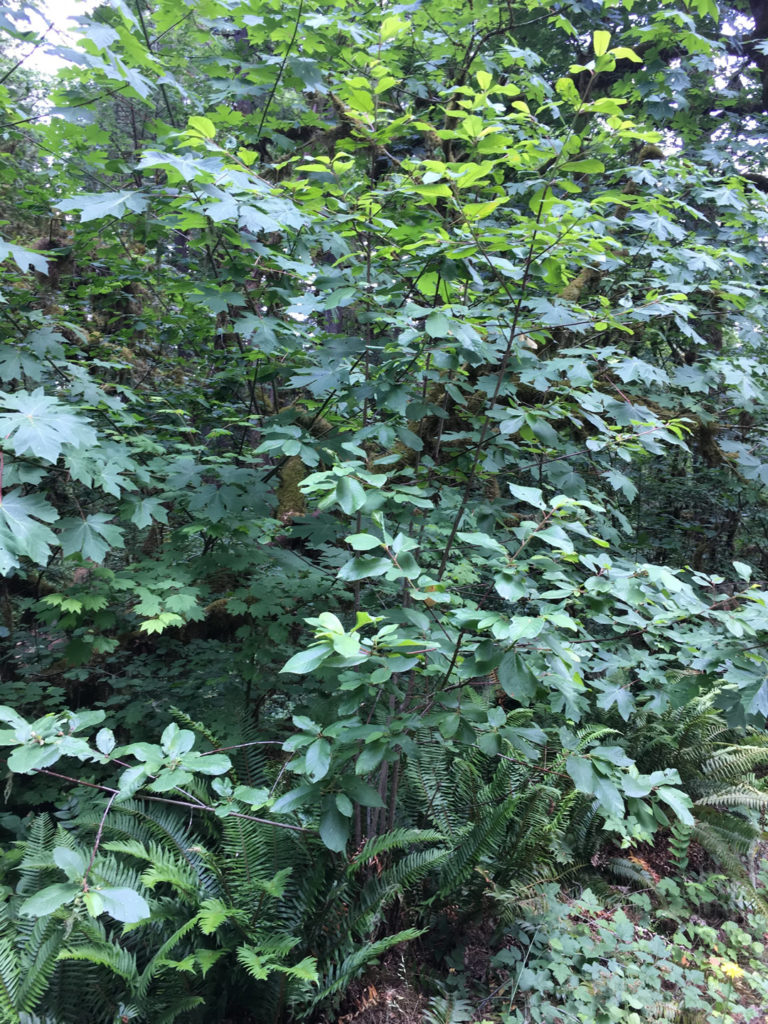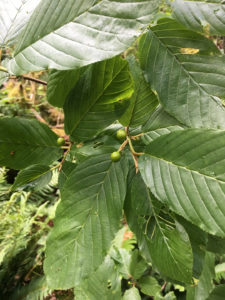
Cascara, Rhamnus purshiana
Rhamnaceae – Buckthorn family
“Rhamnos” is the Greek name for buckthorn. The specific name honors Frederick Pursh (1774-1820), an American botanist. The common name is Spanish for “bark,” the best known and useful part of the cascara tree.
Native people along the west coast of North America universally used the cascara bark as a laxative, a practice adopted by Western medicine and continued to this day. Spanish missions of long ago recognized the medicinal properties of this tree and anointed the active ingredient “cascara sagrada” (literally “sacred bark”). The harvesting of cascara bark was once a major industry in the Northwest. Extract of cascara tree bark can be found in the medication section of most neighborhood grocery stores. One commercial brand contains 150 mg. of “cascara sagrada” per tablet. Cascara trees are relatively small, growing up to 35 feet in height, with one or more erect trunks covered by nearly smooth, grey bark.
The deciduous, oblong, and alternate leaves are distinctively shiny with 1 to 12 pairs of prominent parallel ribs. Inconspicuous green flowers in spring develop into juicy black, berry-like fruits by summer. Birds and other animals relish the sweet fruit, but some authors consider the fruit toxic to humans. Cascara trees, while not numerous, are more common than perceived, for they are inconspicuous amongst the larger trees to the casual observer (5-16).

Information courtesy of “The View From Springbrook Park; an Illustrated Natural History” by Ed Chinn. Photos taken by Laura Tanz
Sponsored by Friends of Springbrook Park; Lake Oswego, OR